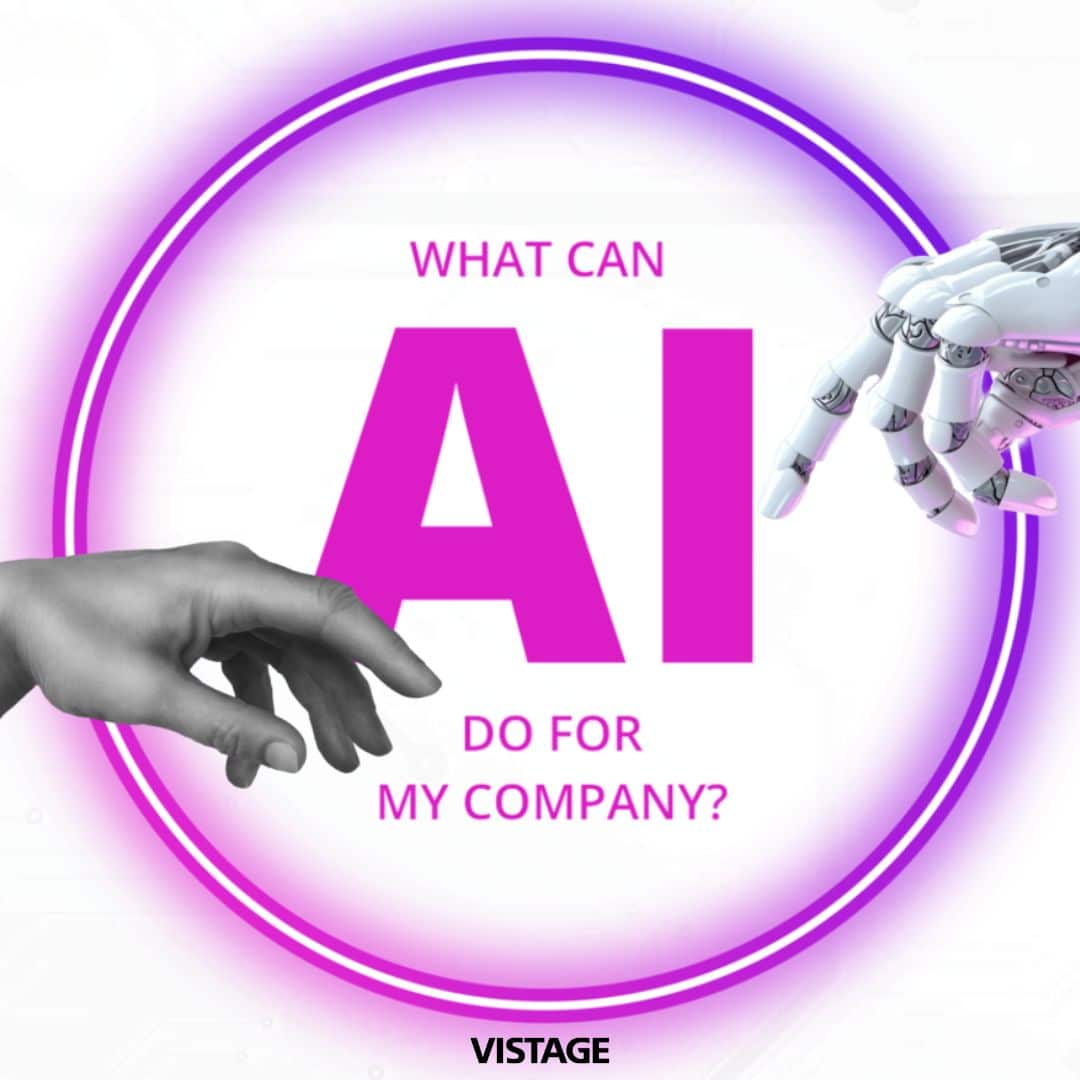What is the right way to harness the power of AI?

What exactly is AI? What is its potential within your organisation? What do you need to do to create an AI strategy to drive growth and innovation?
Vistage Speaker Rob Dixon first became aware of AI in his previous role as a strategic management lecturer. In January 2023 he founded Dixon Humphreys: a consultancy and training firm that works with businesses and universities to accelerate their AI adoption.
His particular focus is on building strategic AI capacities within organisations, as well as upskilling non-technically-minded C-suite and D-suite professionals within those organisations.
On March 13th, Rob hosted a Vistage event on harnessing the power of ChatGPT and wider AI applications. Read on for a snapshot of what was covered.
“Use cases are vast”
If you’re an organisation looking to adopt AI for the first time, Rob advises against a case-led approach. “Use cases are vast”, he says. “Trying to start with a case will get you nowhere. It’s a bit like asking what the use cases are for Microsoft Office or the internal combustion engine – there are millions of them.”
Instead, he believes that the first step for any organisation should be to build an understanding of what AI is, then develop a strategy for introducing AI capabilities into your business.
He describes how an AI implementation strategy often consists of three strands: people, innovation, and policy. Most business leaders, he says, want to start with innovation: finding the use cases for AI within their organisation.
Rob finds that government organisations and educational institutions tend to begin with policy. “Here, it’s all about ethics”, he says. “They want to know the right way to use AI, how to actually use AI, what it will do to jobs, the longer-term implications. This is also the wrong place to start.”
The key place to start, he says, is with people: specifically, the AI literacy of your entire team, building a common language and introducing and explaining key concepts. “What are the different AI models?”, he continues. “What is the difference between a bot and a model? How does AI appear in applications? What’s the difference between Copilot, Duet, Claude, Midjourney? How do these things work, and how do they all fit together?”
Before bringing innovation and purpose into the equation, organisations must focus on building this basic AI literacy. “If they don’t, they’ll go nowhere because nobody knows what they’re talking about”, says Rob. “They’ll be focusing on an existing problem and just thinking AI can fix it. It’s not a magic wand. They need to understand what AI is, what is possible, and how they can overlay this onto their business model. Only then will they be able to thrive and move forward.”
An extension of digital literacy
In the last 12 months, Rob has seen a shift in mindset amongst business leaders. AI is no longer a potential fad to be sceptical about. Senior leadership teams now realise that AI is inevitable, and are making plans to adopt it.
However, adopting AI isn’t as simple as getting a new software package. “AI literacy is an extension of digital literacy”, says Rob. “Every member of your organisation needs to be upskilled at the same time. If it doesn’t happen in a coordinated fashion, you’re going to get false starts.”
He describes how the key role of any leadership team should be to get just enough of an understanding of the language around AI to spot what he calls potential “AI ninjas” within the organisation. “They may well be completely different people to the current leadership team”, he says. “But the people who are willing to upskill themselves now will be the leadership teams of the future. As a leader, you need to be the one guiding that process – and if you don’t, your organisation could well end up being one of the ones that is severely disrupted by AI.”
The talent challenge
AI adoption has increased at an astounding rate. “When ChatGPT launched in November 2022, it was instantly available to 5.8bn people worldwide for free”, explains Rob. “On day one, there
were people building stuff, doing things and implementing it all over the world at the same time. It is still picking up pace at a frightening rate – and that will have an impact on the labour market.”
Rob believes that some organisations will find it very difficult to upskill themselves at the right pace. “There will probably be a shortage of these talented people very quickly, meaning that other organsations will poach them”, he stresses. “If your organisation hasn’t got itself into a decent position, you’ll find your AI Talent will be able to earn a lot of money at other organisations. They’ll leave, and that will just make your situation worse.”
But is AI really worth the effort? Absolutely, says Rob. “It’s going to make such a difference to market prices and product expectations”, he explains. “If you can deliver a call centre with just 10 rather than 100 people, it will make a massive difference to the overheads of that part of the business. If you can just take a marketing brief, upload it into your system and it just produces everything you need (with a few tweaks), anyone still doing things the old way will struggle to compete.”
Those who attended Rob’s webinar came away with a roadmap to guide their organisation to build an AI capability.
“I’m finding that some organisations are just starting to upskill themselves at random”, says Rob. “There’s no change in strategy or business model as a result of AI – and I think that’s what needs to happen. You need to have some kind of a process going on to start that journey, and those organisations that do will absolutely smash it.”
Category : Business Operations Technology

